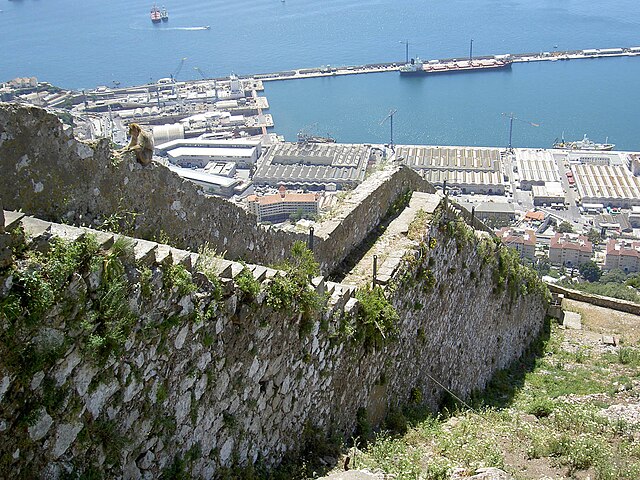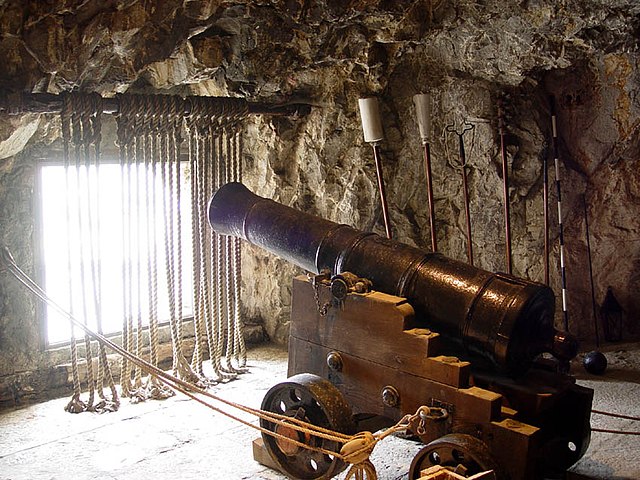Fortifications of Gibraltar
The Gibraltar peninsula, located at the far southern end of Iberia, has great strategic importance as a result of its position by the Strait of Gibraltar where the Mediterranean Sea meets the Atlantic Ocean. It has repeatedly been contested between European and North African powers and has endured fourteen sieges since it was first settled in the 11th century. The peninsula's occupants – Moors, Spanish, and British – have built successive layers of fortifications and defences including walls, bastions, casemates, gun batteries, magazines, tunnels and galleries. At their peak in 1865, the fortifications housed around 681 guns mounted in 110 batteries and positions, guarding all land and sea approaches to Gibraltar. The fortifications continued to be in military use until as late as the 1970s and by the time tunnelling ceased in the late 1960s, over 34 miles (55 km) of galleries had been dug in an area of only 2.6 square miles (6.7 km2).

A 5.25 inch quick-firing dual-purpose gun at Princess Anne's Battery, Gibraltar
An aerial view of modern Gibraltar, looking north-west
Part of the Moorish city wall with a tower en bec, topped with merlons
The Charles V Wall, built in 1540 and strengthened in 1552 by King Charles I of Spain (Charles V of the Holy Roman Empire)
The Great Siege Tunnels in the British Overseas Territory of Gibraltar, also known as the Upper Galleries, are a series of tunnels inside the northern end of the Rock of Gibraltar. They were dug out from the solid limestone by the British during the Great Siege of Gibraltar of the late 18th century.
Great Siege Tunnels in the Rock of Gibraltar.
Guns look to the north defending The Rock from an attack by land
View of The Notch as seen from Devil's Tower Road
Concrete depiction of George Augustus Eliott, a Koehler Depressing Carriage and the crest of the Royal Engineers at the entrance to the tunnels.








